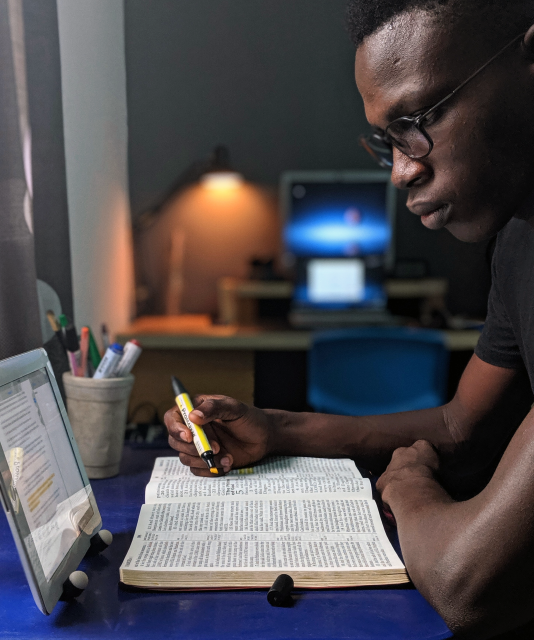Teaching is more than a job or a career; it is a profession and a calling. It is a craft that can be mastered over time with practice and persistence.
But as the present disruptions to university life make so clear, teaching also requires adaptability and problem-solving—the very skills many of us hope to impart to our students. Teaching is an art of improvisation as well as one of patience and planning.
We wrote The Craft of College Teaching to help each other become the best possible versions of our pedagogical selves. We wrote it to share what we have learned through reflecting on a half century of classroom practice. In moving between general principles of teaching and specific examples of practice, we have tried to give readers tools that can be flexibly applied to a range of teaching contexts, in-person and online, and across the disciplines. Our aim has been to contribute to an ongoing conversation about what successful college teaching can be, as measured by the depth, range, and endurance of our students’ learning.
Our book’s title, The Craft of College Teaching, highlights a belief that teaching can be learned, improved, even mastered. Its subtitle, A Practical Guide, underscores its applied nature. Along with our pedagogical suggestions, we provide context and rationale for what to teach, how to teach, and why. What to teach? Concepts and ideas rather than facts. Frameworks and relationships among ideas rather than disconnected details. How to teach? Through active learning strategies—by engaging students through problems, cases, scenarios, along with deliberate practice accompanied by constructive feedback. Why? Because with this approach students learn more and learn better. Their learning goes deeper and lasts longer.
These strategies for engagement couldn’t be more important as we adapt in our current moment to remote teaching. The synchronous and asynchronous aspects of remote teaching and learning pose distinct challenges for student engagement. For synchronous modes of teaching, we need to adapt active learning practices developed for our face-to-face classrooms, while being sensitive to the demands that online, video-based interaction may place on our capacity for attention. Just as in our on-site teaching, we can chunk our class sessions by breaking up lectures into more readily consumable segments, and by interposing questions and mini-exercises to check student understanding. Asynchronous approaches are often the more flexible option in online learning environments, as they allow us to off-load a lot of the work of learning onto students to be done in their own time. But, without a captive audience in the classroom before us, that may also mean we have to think more deliberately about motivating and scaffolding student learning than we’re used to. Our course materials and activities—lectures and readings, online discussions and at-home experiments—need to be meaningfully connected to the goals of the course. Students need to be able to see—or be given the opportunity to recognize—the benefits of this work for their learning.
Why is it important for us to translate our best on-site teaching practices to an online learning environment? Why do these things matter? They matter because students’ college and university experience dramatically impacts their future earnings and career opportunities. They matter, too, because the nature and quality of that experience affects their potential for personal and professional growth and happiness. In navigating the impact of COVID-19 on education across the world, instructors are doing what they can to get by this spring, while familiarizing themselves and their students with new technologies and teaching methods. But the overall goal remains the same. Higher education—higher learning—holds the promise of altering students’ perceptions of themselves, and especially their perception of their talents and capabilities. And that self-recognition can be transformative.
The Craft of College Teaching provides guidance for instructors looking for ways to improve their students’ ability to achieve not only academic success but also meaningful, authentic, long-lasting learning that can change the course of their lives. The practices we encourage reflect our beliefs about what education is for. They testify to our conviction that true learning arises from intrinsic motivation, that it is animated by desire and fostered by active engagement, that it is best nurtured in community, in collaboration with others, and that if it is to matter, learning must become for students a long-lasting habit. Motivation, community, and engagement present central challenges for both remote and in-person learning. They are guiding principles of The Craft of College Teaching.
One final conviction has guided our writing of this book: that teaching is a vocation. As such, it involves devotion—devotion to our students, to our profession, and to the craft of teaching. In teaching with devotion, we remain open to our students’ hearts and minds, to their feelings as well as their thinking. And we respect their differences from us and from one another.
Successful teaching and learning result from this kind of receptivity—whether it’s in the classroom, or through a video-conference or a timely email. Thoughtful feedback can carry across any medium. Being receptive opens us to surprises about what we are able to do as teachers. It allows our students to surprise themselves as they learn, and as they discover things they didn’t know they could do. At our best, we create the conditions in which they can make those discoveries and do those remarkable things. And when we succeed, we will become for our students those teachers that stand out in our own educational journeys, for having had a lasting impact and influence on who we are today.
Robert DiYanni is adjunct professor of humanities and instructional consultant with the Center for Faculty Advancement at New York University. Anton Borst is instructional consultant with the Teaching and Learning with Technology group at New York University. They are the editors of Critical Reading across the Curriculum.

